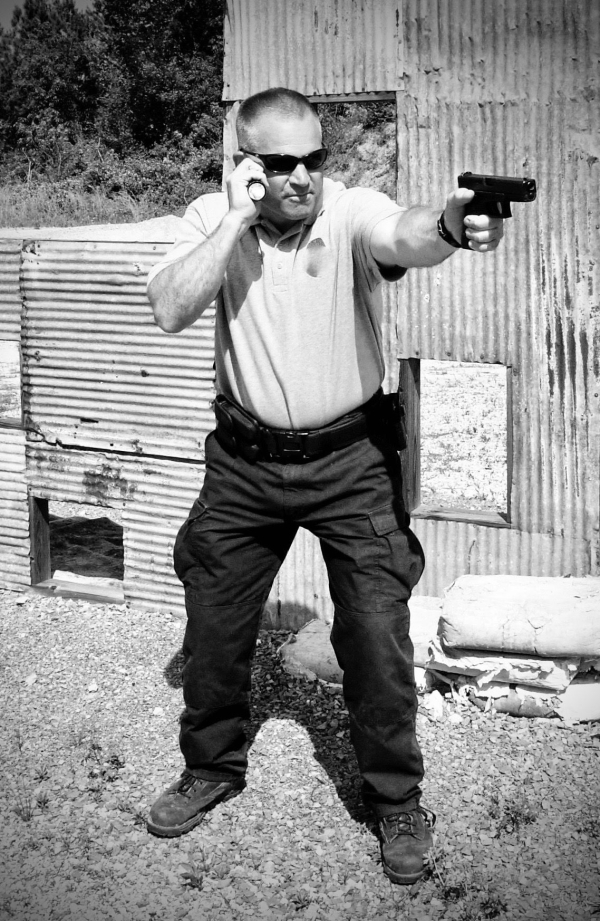There’s a big difference between “shooting” and “fighting.” When shooting, you’re attempting to hit the target, applying the fundamentals of marksmanship to get accurate hits. Fighting involves moving, communicating, using cover – shooting if necessary – and thinking, in order to solve the problem. The differences between shooting and fighting are very evident in the stance used. For shooting you can use about any kind of stance, as long as it’s consistent. Fighting with a firearm requires using a fighting stance.

An aggressive fighting stance provides stability. It’s difficult to fight well if you don’t have a stable base. The proper stance helps you maintain balance when you’re pushed, hit or are injured from incoming fire. This stance allows you to move in any direction, and with the proper footwork in a controlled, steady fashion. A “dynamic” stance also assists in recovering efficiently when firing. (Remember, you focus on recovering from recoil as opposed to trying to control the recoil.)
Also, the vast majority of our communication with others is “body-language.” Assuming a fighting stance tells the threat(s) that you know a little bit about what you’re doing. This may create a “psychological stop;” you’ve convinced the attacker(s) you’re not the victim they anticipated. They decide to find an easier target. Plus, we know that the mind controls the body, but the body will also influence how the brain is thinking. The physical act of taking a fighting stance will affect your mental attitude.
The fighting stance starts by placing the feet a shoulder width apart. The support side leg and foot – left side for a right-hand shooter – is slightly ahead of the strong side foot and leg. Lower your center of gravity slightly – not a deep squat - and shift forward so approximately sixty-percent of your weight is on the support leg. The neck and head should be erect. Avoid the desire to drop the head down between the shoulders. If you were to drop a line from your nose it should hit at the toes of the support side foot.
Fights are fluid; everyone is moving. The fighting stance allows you to move in any direction required. With the proper shuffle type footwork, you can move left, right, forward or to the rear and change from one direction to another with balance and control. This reduces the chances of tripping/falling during the fight, which is never cool. With practice you can shoot while moving and make accurate hits. It’s also the same stance and technique for movement that’s used for clearing corners, searching for possible threats or moving to a safer location.
This stance is the same for handgun and rifle. Twist the hips slightly to bring your shoulder in behind the pistol and it works for single hand firing. Same stance for fighting with empty hands, impact weapons or edged weapons. Having one stance for all things simplifies matters, and produces consistency. The key, as always, is practice.
Tiger McKee is director of Shootrite Firearms Academy. He is the author of The Book of Two Guns, AR-15 Skills and Drills, has a regular column in American Handgunner and makes some cool knives and custom revolvers. www.shootrite.org or visit Shootrite’s Facebook page for other details.